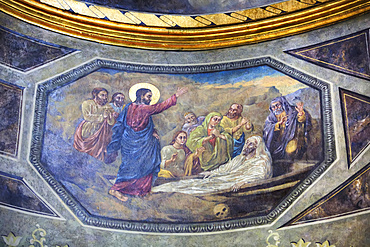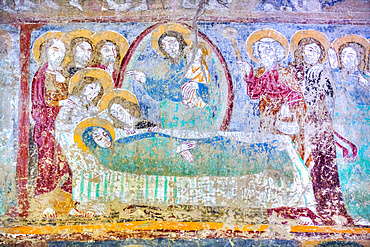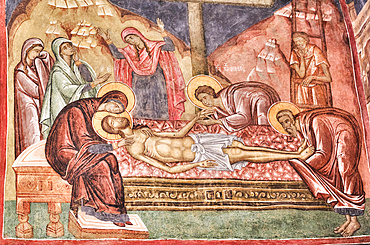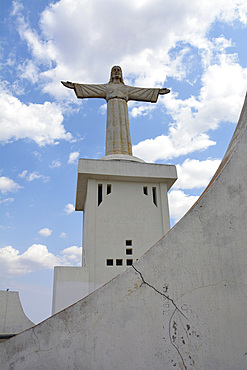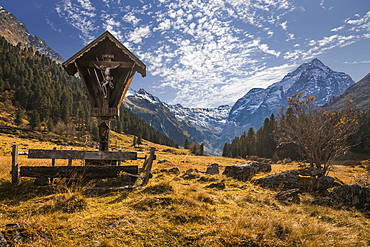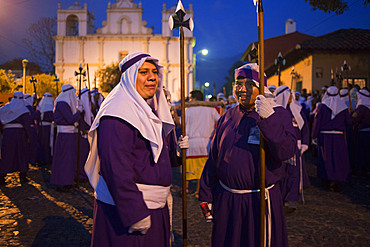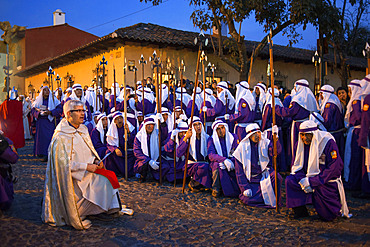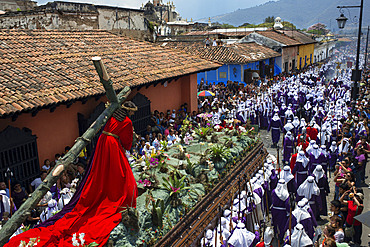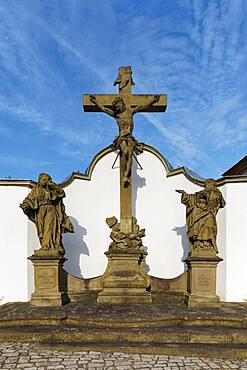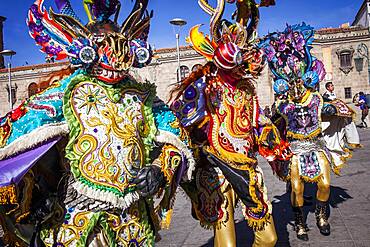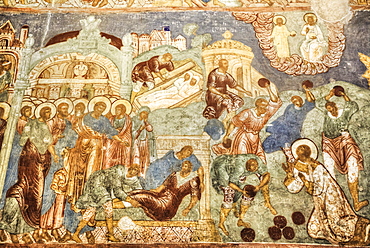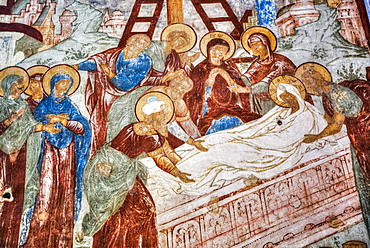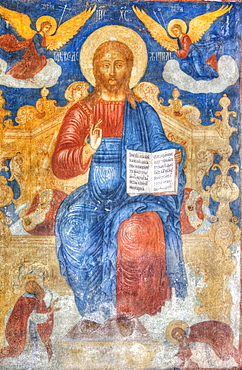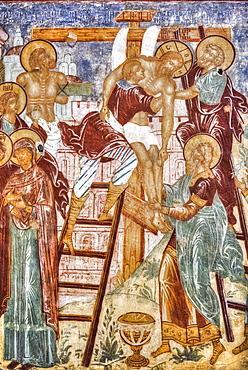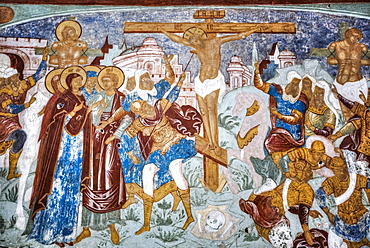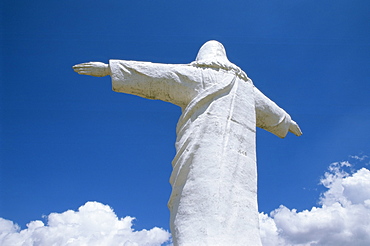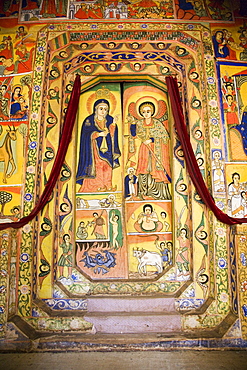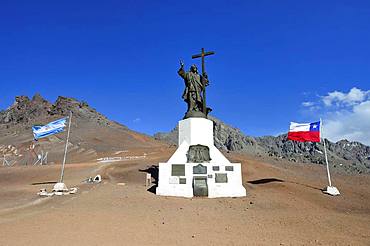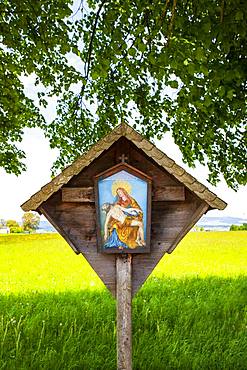Recent searches
Loading...
1116-51778 - Fresco, Church of St Anthony, reconstructed in 1673, Old Town Bucharest; Bucharest, Romania
1116-51844 - Interior Fresco, St George Church Mirauti, 1375; Suceava, Suceava County, Romania
1116-52250 - A colourful stained glass window in a circle-shape with intricate designs and symbols on a stone wall; Nelson, Nelson Province, New Zealand
1116-51870 - Fresco, Holy Trinity Cathedral, founded in 1902; Sibiu, Transylvania Region, Romania
1116-51849 - Interior fresco, Church of the Holy Cross, 1487; Patrauti, Suceava County, Romania
1116-51780 - Fresco, Malancrav Fortified Church, 14th Century, Malancrav, Sibiu County, Romania
1116-51843 - Interior Fresco, St George Church Mirauti, 1375; Suceava, Suceava County, Romania
1116-51848 - Interior fresco, Church of the Holy Cross, 1487; Patrauti, Suceava County, Romania
1113-106836 - Angola; Huila Province; Lubango; Lookout point on the outskirts with the monumental statue of Christo Rei
1113-106761 - Marterl in Lüsenstal with Lüsener Fernerkogel (3,299 m), St. Sigmund im Sellrain, Stubai Alps, Tyrol, Austria
1113-106663 - Wayside cross in Graswang near Ettal, Upper Bavaria, Allgäu, Bavaria, Germany
832-393327 - Diver looking at statue of Christ, Mediterranean Sea, San Fruttuoso, Portofino Peninsula, Liguria, Italy, Europe
832-393754 - Drone image, wayside cross near Pattigham, Innviertel, Upper Austria, Austria, Europe
1339-87 - Fancy woodwork holds Jesus Christ on the Cross inside the Fantoft Stave church, Bergen, Norway, Scandinavia, Europe
809-8293 - Statue of Jesus Christ crucified on a cross by Catherine Green, Basilica of the Holy Trinity, Fatima, Centro, Portugal, Europe
809-8300 - Jesus with the four Evangelists, Batalha Monastery, Late Gothic architecture, intermingled with the Manueline style, UNESCO World Heritage Site, Batalha, Centro, Portugal, Europe
1350-3758 - Easter Holy Week procession in Antigua, Guatemala. Jesus Nazareno de la Penitencia Procession in Antigua, Guatemala. Holy Week, friday.
1350-2688 - Verges, a small town in the Northeast of Catalonia (Spain), during Easter celebrates the Procession of Verges with skeletons dancing on the sound of a drum, Roman soldiers, known as the 'Manages', and a representation of the life and crucifixion of Jesus Christ. The Procession features the Dance of Death, a tradition from the Middle Age associated with epidemics and plagues and the only one remaining in Spain Ten skeletons dance to the beat of a drum to remember that no one is exempt of death. The backdrop of the medieval walls and towers of Verges is key to this macabre staging.
1350-2799 - Religious artwork on display within the Beata Maryam Church, resting place of Menelik II and his wife and daughter. Addis ababa, Ethiopia.
1350-2856 - A man sits near a collection of Christian artwork within the church of Bet Medhane Alem (Church of the World Savior) in Lalibela, Ethiopia
1350-3754 - A boy spreads incense at the Jesus Nazareno del Perdon procession during Easter Holy Week in Antigua Guatemala. Holy Week (Semana Santa) carpet of colored sawdust (alfombras) being prepared on Antigua street. Jesus Nazareno de la Penitencia Procession in Antigua, Guatemala.
1350-2865 - A painting of Mary and Jesus inside the rock hewn monolithic church of Bet Medhane Alem (Church of the World Savior) in Lalibela, Ethiopia
1350-2693 - Verges, a small town in the Northeast of Catalonia (Spain), during Easter celebrates the Procession of Verges with skeletons dancing on the sound of a drum, Roman soldiers, known as the 'Manages', and a representation of the life and crucifixion of Jesus Christ. The Procession features the Dance of Death, a tradition from the Middle Age associated with epidemics and plagues and the only one remaining in Spain Ten skeletons dance to the beat of a drum to remember that no one is exempt of death. The backdrop of the medieval walls and towers of Verges is key to this macabre staging.
1350-2692 - Verges, a small town in the Northeast of Catalonia (Spain), during Easter celebrates the Procession of Verges with skeletons dancing on the sound of a drum, Roman soldiers, known as the 'Manages', and a representation of the life and crucifixion of Jesus Christ. The Procession features the Dance of Death, a tradition from the Middle Age associated with epidemics and plagues and the only one remaining in Spain Ten skeletons dance to the beat of a drum to remember that no one is exempt of death. The backdrop of the medieval walls and towers of Verges is key to this macabre staging.
1350-2695 - Verges, a small town in the Northeast of Catalonia (Spain), during Easter celebrates the Procession of Verges with skeletons dancing on the sound of a drum, Roman soldiers, known as the 'Manages', and a representation of the life and crucifixion of Jesus Christ. The Procession features the Dance of Death, a tradition from the Middle Age associated with epidemics and plagues and the only one remaining in Spain Ten skeletons dance to the beat of a drum to remember that no one is exempt of death. The backdrop of the medieval walls and towers of Verges is key to this macabre staging.
1350-3760 - Easter Holy Week procession in Antigua, Guatemala. Jesus Nazareno de la Penitencia Procession in Antigua, Guatemala. Holy Week, friday.
1350-2857 - A woman sits in front of a painting of jesus Christ inside the church of Bet Medhane Alem (Church of the World Savior) in Lalibela, Ethiopia
1350-2690 - Verges, a small town in the Northeast of Catalonia (Spain), during Easter celebrates the Procession of Verges with skeletons dancing on the sound of a drum, Roman soldiers, known as the 'Manages', and a representation of the life and crucifixion of Jesus Christ. The Procession features the Dance of Death, a tradition from the Middle Age associated with epidemics and plagues and the only one remaining in Spain Ten skeletons dance to the beat of a drum to remember that no one is exempt of death. The backdrop of the medieval walls and towers of Verges is key to this macabre staging.
1350-2691 - Verges, a small town in the Northeast of Catalonia (Spain), during Easter celebrates the Procession of Verges with skeletons dancing on the sound of a drum, Roman soldiers, known as the 'Manages', and a representation of the life and crucifixion of Jesus Christ. The Procession features the Dance of Death, a tradition from the Middle Age associated with epidemics and plagues and the only one remaining in Spain Ten skeletons dance to the beat of a drum to remember that no one is exempt of death. The backdrop of the medieval walls and towers of Verges is key to this macabre staging.
1350-2687 - Verges, a small town in the Northeast of Catalonia (Spain), during Easter celebrates the Procession of Verges with skeletons dancing on the sound of a drum, Roman soldiers, known as the 'Manages', and a representation of the life and crucifixion of Jesus Christ. The Procession features the Dance of Death, a tradition from the Middle Age associated with epidemics and plagues and the only one remaining in Spain Ten skeletons dance to the beat of a drum to remember that no one is exempt of death. The backdrop of the medieval walls and towers of Verges is key to this macabre staging.
1350-3763 - Easter Holy Week procession in Antigua, Guatemala. Jesus Nazareno de la Penitencia Procession in Antigua, Guatemala. Holy Week, friday.
1350-2689 - Verges, a small town in the Northeast of Catalonia (Spain), during Easter celebrates the Procession of Verges with skeletons dancing on the sound of a drum, Roman soldiers, known as the 'Manages', and a representation of the life and crucifixion of Jesus Christ. The Procession features the Dance of Death, a tradition from the Middle Age associated with epidemics and plagues and the only one remaining in Spain Ten skeletons dance to the beat of a drum to remember that no one is exempt of death. The backdrop of the medieval walls and towers of Verges is key to this macabre staging.
1350-2696 - Verges, a small town in the Northeast of Catalonia (Spain), during Easter celebrates the Procession of Verges with skeletons dancing on the sound of a drum, Roman soldiers, known as the 'Manages', and a representation of the life and crucifixion of Jesus Christ. The Procession features the Dance of Death, a tradition from the Middle Age associated with epidemics and plagues and the only one remaining in Spain Ten skeletons dance to the beat of a drum to remember that no one is exempt of death. The backdrop of the medieval walls and towers of Verges is key to this macabre staging.
1350-2697 - Verges, a small town in the Northeast of Catalonia (Spain), during Easter celebrates the Procession of Verges with skeletons dancing on the sound of a drum, Roman soldiers, known as the 'Manages', and a representation of the life and crucifixion of Jesus Christ. The Procession features the Dance of Death, a tradition from the Middle Age associated with epidemics and plagues and the only one remaining in Spain Ten skeletons dance to the beat of a drum to remember that no one is exempt of death. The backdrop of the medieval walls and towers of Verges is key to this macabre staging.
1350-2694 - Verges, a small town in the Northeast of Catalonia (Spain), during Easter celebrates the Procession of Verges with skeletons dancing on the sound of a drum, Roman soldiers, known as the 'Manages', and a representation of the life and crucifixion of Jesus Christ. The Procession features the Dance of Death, a tradition from the Middle Age associated with epidemics and plagues and the only one remaining in Spain Ten skeletons dance to the beat of a drum to remember that no one is exempt of death. The backdrop of the medieval walls and towers of Verges is key to this macabre staging.
832-392645 - Relief Jesus on the Mount of Olives 15th century, at St Marienkirche, Sulzbach-Rosenberg, Upper Palatinate Bavaria, Germany, Europe
832-392883 - Jesus figure with lamb, on the facade of the protestant town church, baroque building from 1699, Kitzingen, Lower Franconia, Bavaria, Germany, Europe
832-393189 - Crucifixion group, depiction of Virgin Mary, Jesus and Johannes, Wiesentheid, Lower Franconia, Franconia, Bavaria, Germany, Europe
832-393142 - Wayside cross in the Lorettowiesen, view of the mountains near Oberstdorf, Rubihorn 1937 m, Gaisalphorn 1953 m, Schattenberg 1721 m, Allgaeu Alps, Allgaeu, Bavaria
832-393143 - Cross in the Lorettowiesen, view to the mountain Riefenkopf 1748 m near Oberstdorf, Allgaeu Alps, Allgaeu, Bavaria, Germany, Europe
1113-105356 - Jesus Christ played by a priest carrying the Cross, The Mystery of the passion of Christ Kalwaria Zebrzydowska, Cracow, Poland
832-392103 - Figure of the black Madonna with baby Jesus in the Marktstrasse, Bad Toelz, Upper Bavaria, Bavaria, Germany, Europe
832-392104 - Figure of the Madonna with baby Jesus and snake in the Marktstrasse, Bad Toelz, Upper Bavaria, Bavaria, Germany, Europe
1350-882 - Fiesta del Gran Poder, Plaza San Francisco, in background San Francisco church, La Paz, Bolivia
1350-847 - Torists, Largest statue of Jesus Christ in the world, the Cristo de la Concordia in Cochabamba, Bolivia
1350-849 - View from the Cristo de la Concordia, Cochabamba, Bolivia
1350-885 - Fiesta del Gran Poder, Plaza San Francisco, in background San Francisco church, La Paz, Bolivia
1350-848 - Torists, Largest statue of Jesus Christ in the world, the Cristo de la Concordia in Cochabamba, Bolivia
1350-883 - Fiesta del Gran Poder, Plaza San Francisco, La Paz, Bolivia
1350-884 - Fiesta del Gran Poder, Plaza San Francisco, in background San Francisco church, La Paz, Bolivia
1116-50166 - Fresco, Transfiguration Cathedral, Monastery of St Euthymius; Suzdal, Vladimir Oblast, Russia
1116-50157 - Fresco, Miracle-Image of the Saviour Church, Kremlin, Golden Ring; Rostov Veliky, Yaroslavl Oblast, Russia
1116-50185 - Fresco, The Resurrection Church on the Debra; Kostroma, Kostroma Oblast, Russia
1116-50013 - Church of Elijah the Prophet, with colourful frescoes on the walls depicting Biblical scenes; Yaroslavl, Yaroslavl Oblast, Russia
1116-50114 - Fresco, Holy Monastery of Varlaam, Meteora; Thessaly, Greece
1116-50148 - Interior Frescoes, Uspenskaya Church; Suzdal, Vladimir Oblast, Russia
1116-50186 - Fresco, Troitse-Sergiyev Varnitskiy Monastery, near Rostov Veliky, Golden Ring; Yaroslavl Oblast, Russia
1116-50025 - Fresco in the Church of St John the Baptist; Yaroslavl, Yaroslavl Oblast, Russia
1116-50161 - Fresco, Gate Church of the Resurrection (1670), Kremlin, Golden Ring; Rostov Veliky, Yaroslavl Oblast, Russia
1116-50027 - Fresco in the Church of St John the Baptist; Yaroslavl, Yaroslavl Oblast, Russia
1116-50184 - Fresco, The Resurrection Church on the Debra; Kostroma, Kostroma Oblast, Russia
1116-50022 - Fresco in the Church of St John the Baptist; Yaroslavl, Yaroslavl Oblast, Russia
1116-50019 - Church of Elijah the Prophet, with ornate arched doorways and colourful frescoes; Yaroslavl, Yaroslavl Oblast, Russia
1116-50020 - Church of Elijah the Prophet, with ornate arched doorway and colourful frescoes; Yaroslavl, Yaroslavl Oblast, Russia
1116-50015 - Church of Elijah the Prophet, with colourful frescoes on the walls depicting Biblical scenes; Yaroslavl, Yaroslavl Oblast, Russia
1116-50162 - Fresco, Gate-Church of the Resurrection (1670), Kremlin, Golden Ring; Rostov Veliky, Yaroslavl Oblast, Russia
1116-50165 - Fresco, Transfiguration Cathedral, Monastery of St Euthymius; Suzdal, Vladimir Oblast, Russia
1116-50179 - Fresco, Holy Monastery of Varlaam, Meteora; Thessaly, Greece
1116-50160 - Fresco, Gate Church of the Resurrection (1670), Kremlin, Golden Ring; Rostov Veliky, Yaroslavl Oblast, Russia
1116-50149 - Interior frescoes, Uspenskaya Church; Suzdal, Vladimir Oblast, Russia
1116-50016 - Church of Elijah the Prophet, with colourful frescoes; Yaroslavl, Yaroslavl Oblast, Russia
1116-50014 - Church of Elijah the Prophet, with colourful frescoes on the walls depicting Biblical scenes; Yaroslavl, Yaroslavl Oblast, Russia
809-8244 - Resurrection fresco of Jesus resurrecting Lazarus, Orthodox Cathedral, Podgorica, Montenegro, Europe
846-1170 - Christian worshippers in evening, Chowara Beach, near Kovalam, Kerala, India, Asia
1113-104768 - Tree with wayside cross, Cross of Jesus on a field in the morning mist, Aubing, Munich, Bavaria, Germany
832-389909 - Christian statue at a road bend, Wallis, Wallis and Futuna, Oceania
1113-103901 - Jesus Christ played by a priest carrying the Cross, The Mystery of the passion of Christ Kalwaria Zebrzydowska, Cracow, Poland
1113-103899 - Jesus Christ played by a priest, The Mystery of the passion of Christ Kalwaria Zebrzydowska, Cracow, Poland
1113-103897 - Jesus Christ played by a priest, The Mystery of the passion of Christ Kalwaria Zebrzydowska, Cracow, Polen
1113-103900 - Jesus Christ played by a priest, The Mystery of the passion of Christ Kalwaria Zebrzydowska, Cracow, Poland
1184-4972 - Cathedral of the Resurrection of Jesus Christ, UNESCO World Heritage Site, Ravenna, Emilia-Romagna, Italy, Europe
832-389335 - Martyrdom on a house wall in the mountain village Masca, Masca gorge, Teno Mountains, Tenerife, Canary Islands, Spain, Europe
832-388557 - Diver at Christ statue under water, Mediterranean Sea, bay of San Fruttuoso, Portofino, Liguria, Italy, Europe
796-2528 - Jesus on the Cross (Christian Cross) sculpture, Old Town, Innsbruck, Tyrol, Austria, Europe
832-388139 - Bronze statue, Pieta, Salzburg Cathedral, Salzburg, Austria, Europe
83-13171 - Colourful prow of fishing boat with Jesus, Mary, Joseph Christian picture on Marari Beach, Mararikulam, Alappuzha, Kerala, India, Asia
1104-1761 - View of Infant Jesus Roman Catholic Latin Cathedral, Kollam, Kerala, India, Asia
252-10753 - Statue of Christ overlooking the city, Cuzco, Peru, South America
252-11038 - Murals in the beautifully painted Inner Sanctuary of the Christian Church of Ura Kedane Meheriet, Zege Peninsula, Lake Tana, Ethiopia, Africa
832-385303 - Statue of Sacred Heart of Jesus opposite the Se Cathedral, Old Goa, India, Asia
832-387143 - Statues of Jesus Christ, John the Baptist and Apostles on the facade of St Peter's Basilica, Piazza San Pietro, Vatican, Rome, Italy, Europe
832-386622 - Statue of Christ, Cristo de La Habana, Havana, Cuba, Central America
832-387607 - Statue of Cristo Redentor de los Andes, Christ Redeemer of the Andes, Paso de la Cumbre, near Uspallata, Mendoza Province, Argentina, South America
832-386930 - Wayside shrine, Michaelbeuern, Flachgau.Land Salzburg, Austria, Europe
832-387608 - Statue of Cristo Redentor de los Andes, Christ Redeemer of the Andes, Paso de la Cumbre, near Uspallata, Mendoza Province, Argentina, South America
832-387284 - Wayside shrine at the Schoellanger castle, place Reichenbach, Rubihorn and Nebelhorn, near Oberstdorf, Oberallgaeu, Allgaeu, Swabia, Bavaria, Germany, Europe
832-386763 - Wayside shrine, wayside shrine under a lime tree, Weissenkirchen in the Attergau, Hausruck Quarter, Upper Austria, Austria, Europe
832-386621 - Statue of Christ, Cristo de La Habana, Havana, Cuba, Central America
809-8018 - Wooden letters forming the words JESUS and GOD, Christian symbol, Vietnam, Indochina, Southeast Asia, Asia
